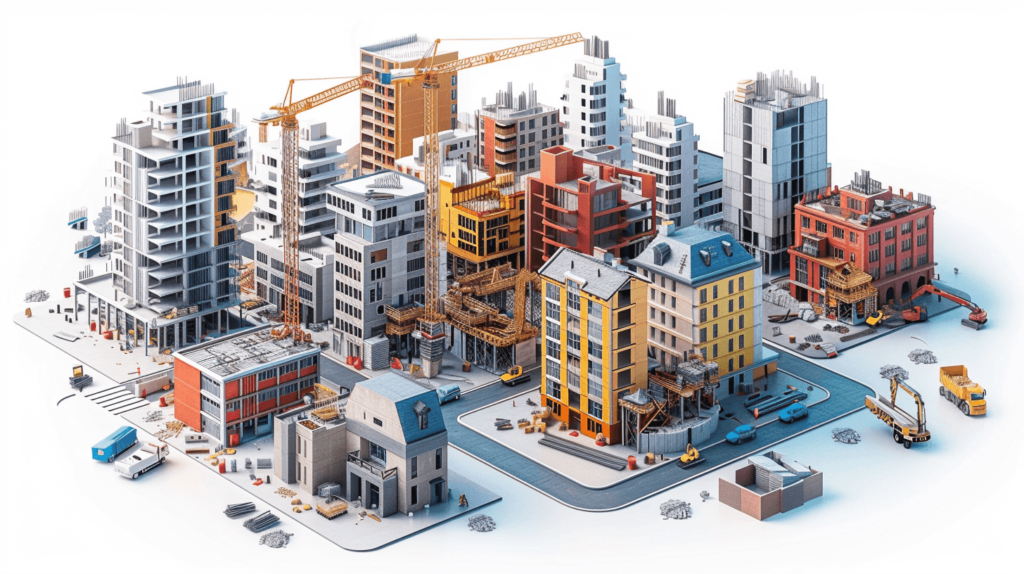
In today’s competitive construction industry, adopting innovative technologies and methodologies is crucial for project success. Building Information Modeling (BIM), a collaborative approach to project design and construction has revolutionized the industry by enhancing efficiency, reducing costs, and minimizing risks. To effectively implement BIM and reap its full benefits, the role of a BIM Manager is indispensable.
What is a BIM Manager and Their Responsibilities?
A BIM Manager, or Building Information Modeling Manager, is a specialized professional responsible for overseeing the implementation and management of BIM methodologies throughout the project lifecycle. They serve as a central point of coordination, ensuring seamless collaboration among various stakeholders, including architects, engineers, contractors, and project managers.

Key Responsibilities of a BIM Manager:
- Establish BIM Standards and Protocols: Define clear guidelines and protocols for creating, managing, and exchanging BIM data, ensuring consistency and quality across the project.
- Coordinate BIM Implementation: Facilitate the adoption of BIM processes across all project phases, from design and construction to operation and maintenance.
- Manage BIM Collaboration: Foster effective communication and collaboration among project teams, ensuring efficient data sharing and conflict resolution.
- Oversee BIM Data Integrity: Monitor and maintain the integrity of BIM data, ensuring accuracy and consistency throughout the project lifecycle.
- Identify and Resolve BIM Issues: Proactively identify and resolve interoperability issues and model clashes, minimizing errors and rework.
- Optimize Project Efficiency: Leverage BIM to streamline workflows, enhance decision-making, and optimize project delivery.
Benefits of BIM Beyond Construction
The advantages of BIM extend far beyond the construction phase, transforming the entire building lifecycle and delivering ongoing value to project owners.
Efficient Facility Management
BIM models serve as a valuable asset for facility management, providing detailed information for routine maintenance, space planning, and future renovations.
Optimized Maintenance Planning
BIM facilitates preventive maintenance by enabling predictive analysis and scheduling, reducing downtime and associated costs.
Enhanced Energy Efficiency
BIM enables advanced energy simulations, identifying opportunities to optimize building systems and reduce energy consumption.
Improved Communication and Visualization
BIM models provide a shared understanding of the building, facilitating communication among stakeholders and enhancing decision-making.
Streamlined Change Management
BIM simplifies change management by providing a centralized repository for modifications and updates.
Regulatory Compliance
BIM models facilitate compliance with building codes and regulations, streamlining the approval process.
The Role of BIM in Construction
BIM revolutionizes construction by optimizing planning, coordination, and execution.
- Enhanced Construction Planning: BIM enables clash detection, constructability reviews, and 4D scheduling, improving project planning and reducing construction risks.
- Improved Construction Coordination: BIM facilitates seamless collaboration among construction teams, minimizing errors and rework.
- Streamlined Construction Execution: BIM provides real-time insights into construction progress, enabling efficient decision-making and course correction.
The Role of BIM in Architecture
BIM transforms the way architects conceptualize, design, and document projects.
- Advanced Design Visualization: BIM enables architects to create detailed 3D models, enhancing design visualization and stakeholder communication.
- Integrated Design Analysis: BIM facilitates performance simulations, such as energy analysis and structural analysis, optimizing design decisions.
- Automated Design Documentation: BIM automates the generation of drawings and schedules, saving time and improving accuracy.
The Importance of a BIM Manager
A skilled BIM Manager plays a pivotal role in project success by ensuring the effective implementation and utilization of BIM throughout the project lifecycle.

- Establish BIM Standards and Protocols: Define clear guidelines and protocols for creating, managing, and exchanging BIM data, ensuring consistency and quality across the project.
- Coordinate BIM Implementation: Facilitate the adoption of BIM processes across all project phases, from design and construction to operation and maintenance.
- Manage BIM Collaboration: Foster effective communication and collaboration among project teams, ensuring efficient data sharing and conflict resolution.
- Oversee BIM Data Integrity: Monitor and maintain the integrity of BIM data, ensuring accuracy and consistency throughout the project lifecycle.
- Identify and Resolve BIM Issues: Proactively identify and resolve interoperability issues and model clashes, minimizing errors and rework.
- Optimize Project Efficiency: Leverage BIM to streamline workflows, enhance decision-making, and optimize project delivery.
Centralized BIM Project Management on Servers

Centralized BIM project management on servers involves consolidating all project data and models in a single, centralized location accessible to all team members. This approach offers several advantages:
Enhanced Collaboration: Facilitates seamless collaboration among project participants by providing a centralized repository for BIM data.
Improved Version Control: Streamlines version control, enabling efficient tracking and management of changes made by different team members.
Enhanced Data Security: Provides a secure environment for storing and managing sensitive project data.
Simplified Software Integration: Integrates seamlessly with various BIM software applications, facilitating data exchange and collaboration
Centralized Success: The Crucial Role of Servers in BIM Implementation
In today’s modern construction landscape, efficient project management is paramount to achieving success. The advent of Building Information Modeling (BIM) has revolutionized the way projects are planned, executed, and managed. One of the key elements in effective BIM implementation is the establishment of a Centralized Server, a foundational infrastructure that provides a solid platform for collaboration, data management, and coordination among the various project stakeholders.
Centralized Server: The Hub of BIM Collaboration
The Centralized Server serves as a central focal point within the BIM environment, where all project files and data converge. Acting as a central repository, this server stores models, documents, reference files, and other relevant information, providing unified and secure access for all team members.
Remote Access: Collaboration Without Boundaries
One of the significant advantages of this approach is the ability to access the server remotely. Through BIM collaboration software and an internet connection, collaborators can work from any location, accessing project files in real-time, facilitating seamless remote collaboration.
Real-Time Collaboration: Enhanced Communication and Decision-Making
The capability to collaborate in real-time on a single BIM model is another crucial aspect of the Centralized Server. This fosters smoother communication among teams, streamlines decision-making, and ensures that all stakeholders are working with the most up-to-date information.
Data Security: Safeguarding Project Information
Data security is a top priority in any project, and the Centralized Server offers an additional layer of protection. Access permissions and user roles can be established, and regular backups can be performed, ensuring the confidentiality and integrity of project information.
Version Control: Tracking Changes with Precision
The Centralized Server simplifies version control, enabling efficient tracking and management of changes made by different team members. This functionality ensures the consistency and integrity of project data throughout its evolution.
BIM Software Integration: Seamless Collaboration and Interoperability
The Centralized Server seamlessly integrates with a variety of leading BIM software applications. This facilitates collaboration across different disciplines and enables efficient coordination of project models and data. This interoperability enhances teamwork efficiency and quality, driving excellence in construction project execution.
Our Expertise and Reach: Global BIM Solutions
At Green Masters, we pride ourselves on our extensive experience and global reach in BIM consulting. We specialize in design and construction, and our expertise allows us to tackle the most complex and demanding challenges of any project. We work virtually, addressing the needs of clients worldwide, offering customized solutions tailored to their specific requirements.
Contact us today and discover how we can help you elevate your projects to the next level!